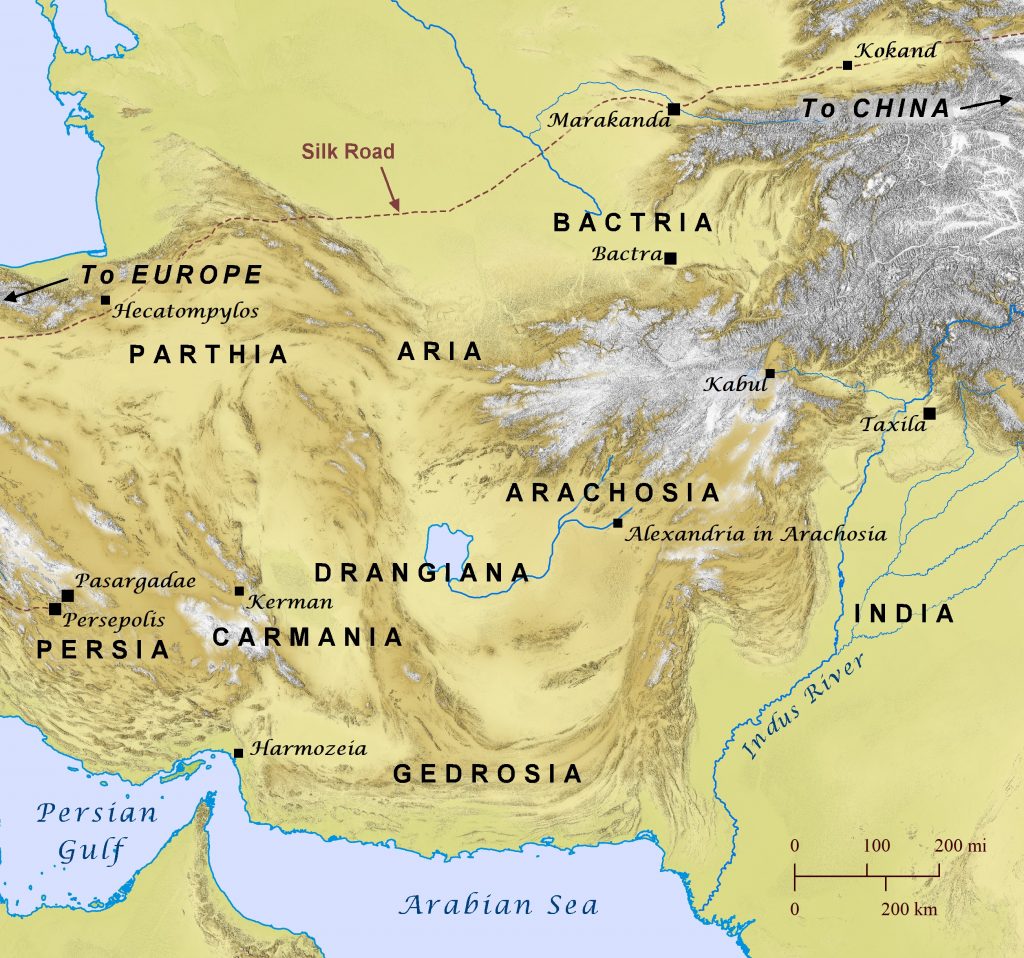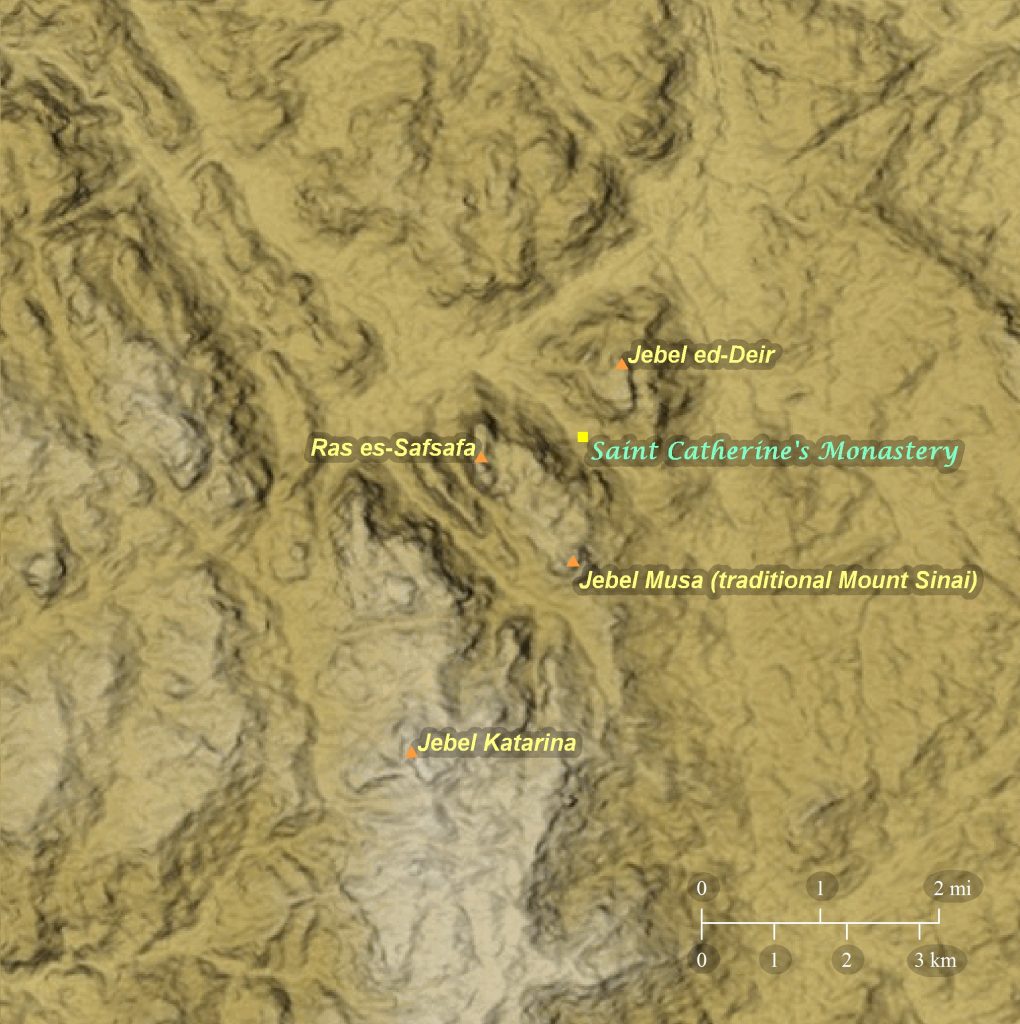Though the book of Acts undoubtedly provides an accurate account of the apostle Paul’s journeys, a careful study of Paul’s letters suggests that Acts must not be an exhaustive account. This can be seen most clearly in Paul’s mention in Romans 15:19 of preaching the gospel “from Jerusalem all the way around to Illyricum.” Paul’s letter to the Romans was likely written at Corinth during his third missionary journey, yet Illyricum is never explicitly mentioned in Acts as one of Paul’s destinations up to that point. Acts 20:2 does, however, mention that on his way to Corinth Paul traveled “through that area,” referring to Macedonia, which borders the southern portion of Illyricum. Perhaps Luke intentionally used this vague phrase to indicate that Paul actually traveled throughout Macedonia instead of simply passing through it. The Egnatian Way would have provided efficient travel to the western coast of Macedonia, and from there Paul could have easily visited southern Illyricum. Alternatively, Paul may have organized a trip to Illyricum by ship during his three month stay in Corinth just before he wrote his letter to the Romans. Later, in Paul’s second letter to Timothy (4:10), he also mentions that Titus has gone to Dalmatia (in southern Illyricum), perhaps confirming that Paul had already established contacts there during an earlier visit.

⤓ download hi-res file 🔍 see in TimeGlider
Lands beyond Persia
Though the lands beyond Persia are explicitly mentioned only a few times in the Bible (Esther 1:1; 8:9; Acts 2:9), these lands affected–and were affected by–biblical events in significant ways. The book of Esther notes that the domain of the Persian Empire stretched from India (its eastern border) to Cush (its western border; not shown here) during the reign of King Xerxes (around 460 B.C.). At that time the term India referred to the area surrounding the Indus River, which had given rise to a civilization that flourished many centuries earlier but that had declined significantly by Xerxes’ time. The other lands of this region (e.g., Bactria, Arachosia, and Gedrosia) were likewise very old, but the nations further west (e.g., Assyria, Babylonia, and Egypt) did not have significant involvement with them until the Persian Empire subjugated all of these lands by about 525 B.C. Alexander the Great in turn seized all of these lands from Persia, and his successors the Seleucids continued to rule them. Eventually the lands shown here came under the rule of the newly established Parthian Empire, which lasted throughout the time of the New Testament. Acts 2:9 notes that Jews from Parthia were present at the Temple in Jerusalem when Peter preached his famous sermon at Pentecost. The Silk Road, which passed through the Parthian Empire, had also become a significant trading corridor by this time, linking China and its goods with the lands of the Parthians and the Romans. There is also a very strong tradition among many Christians in modern India (located southeast of the Indus River) that the apostle Thomas eventually traveled deep into the Indian subcontinent to spread the good news of Jesus Christ.

Mount Sinai (Jebel Musa)
Exodus 19-40; Leviticus 1-27
Perhaps no other topic in Bible geography has generated more debate over the centuries than the exact location of Mount Sinai, where the Lord gave Moses the law and the Ten Commandments. At least a dozen locations have been offered, including a location beyond the Sinai peninsula in Arabia. One of the oldest traditions regarding Mount Sinai’s location places it at Jebel Musa (meaning “the mountain of Moses”) in the southern Sinai peninsula (see also “Egypt”). Around A.D. 560 Saint Catherine’s Monastery was built at the foot of Jebel Musa to commemorate the giving of the law on Mount Sinai, and its library has produced some of the oldest biblical manuscripts in the world.

The Negev
At first glance, the region often referred to in Scripture as the Negev could easily be written off as merely a land of sparcity–both in rainfall and in population. Yet this land that seems of little value proved to be of great worth to Israel and its leaders over time as it protected the southern frontier against invasion and ensured reliable access to important roads such as the Way to Shur and the Incense Route from southern Arabia. The Negev spanned a loosely defined area in the southern extreme of Israel. With an average rainfall of about 8 inches (20 cm) per year its desert climate often required inhabitants to live semi-nomadically to survive. At the same, however, when the occasional rain did come, the whole region quickly sprang to life with new vegetation, especially along seasonal streambeds (see Psalm 126:4). Abraham and Isaac spent considerable time in this region (Genesis 12:1-8; 13:1-3; 20:1-21:34; 24:62; 25:11), and Abraham is credited with digging the well at Beersheba (21:30-31). The Amalekites already occupied the Negev by this time (Genesis 14:7), and they continued to live there until Saul and David finally destroyed them (1 Samuel 14:47-48; 15:1-35; 1 Samuel 30:1-30). While the Israelites were living at Kadesh-barnea they prepared to enter the Promised Land through the Negev (Numbers 14:40-45), but instead they were driven back by the Amalekites and the Canaanites (Numbers 14:25-45). After the Israelites took possession of Canaan, the Negev was allotted to the tribes of Judah and Simeon (Joshua 15:1-63; 19:1-9). David and Solomon retained a firm grip over the Negev during their reigns (2 Samuel 24:1-8), but after the kingdom was divided some kings of Judah struggled to maintain control over the region (e.g., 2 Chronicles 28:16-21). After the Babylonians attacked Judah in 586 B.C., Edom took possession of the Negev and remained there for four hundred years until the Maccabees recaptured it and forced the Edomites there to convert to Judaism. Herod the Great was descended from these Edomites (also called Idumeans), and he maintained various fortresses throughout the Negev during his reign as king.

Ararat
Many readers of the Bible are aware that Ararat is the location where Noah’s ark came to rest (Genesis 8:4), yet few would recognize it on a map, and fewer still would be able to recount much else about this noteworthy place. The land of Ararat (also called Urartu) was indeed mountainous, so it is fitting that Noah’s ark came to rest there, though the Bible does not name a specific peak or exact location. Ararat lay to the north of Assyria and to the south of the fabled land of Colchis, the destination of Jason and the Argonauts in their search for the golden fleece. The peoples of Ararat existed as a loose confederation of smaller kingdoms from about 1300 B.C. until 860 B.C., when they united under a single king and established their capital at Tushpa. The newly formed kingdom of Ararat (shown here) managed to keep the weakened Assyrian Empire at bay until 745 B.C., when Tiglath-Pileser III conquered them. As a result, the Assyrians gained access to the excellent horses of Ararat, which they harnessed to their war chariots. Later, two sons of the Assyrian ruler Sennacherib fled to Ararat after murdering their father (2 Kings 19:37; Isaiah 37:38). Still later the prophet Jeremiah named Ararat among the nations summoned to repay Babylon for its deeds (Jeremiah 51:27). In 590 B.C., the resurgent kingdom of Ararat fell to the Medes and later became absorbed into the Persian Empire. After Alexander the Great freed Ararat (now called Armenia) from the Persians, the region was ruled by the Seleucids. By 69 B.C., however, it had come under Roman rule, and in 12 A.D. it was taken over by the Parthians.

